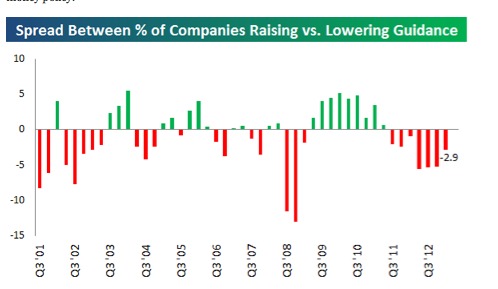By: Jose Torres, Interactive Brokers’ Senior Economist
Investors are picking up shares of almost everything today with the S&P 500 nearing its all-time high. Yields are ticking upward, however, as traders examine a dramatic rise in oil prices resulting from rising geopolitical tensions. Loftier costs for the commodity alongside the ninth consecutive month of home price gains are supporting inflation expectations. Also on the yield front, market players are looking forward to a 2-year Treasury note auction this afternoon in which fiscal authorities attempt to bring in $57 billion at favorable rates.
Home Prices Continue Rising on Fed Easing Optimism
In October, mortgage yields exceeded 8%, incrementally preventing existing homeowners with near record-low rates from selling their residences and relocating as higher financing costs have made such a change more expensive. The resulting shortage of homes on the resale market has driven up prices. Additionally, in recent years, construction of new homes has trailed demand. Price gains occurred despite the NAR Housing Affordability Index dropping to 91.4, just slightly above the all-time low of 87.8. The index measures the relationship of homebuyers’ income and home prices. A level of 100 means a family with the median income can qualify for a mortgage at the median home price. Mortgage rates have since dipped below 7%, which will support additional demand via affordability, while enticing some existing homeowners to put their homes on the market and relocate.
Gateway City Home Prices Reach Milestones
Both the S&P Case Schiller and FHFA Home Price indices recorded gains during the month of October. The former grew 0.6% month-over-month (m/m) and 4.8% year-over-year (y/y) while the latter grew 0.3% m/m and 6.3% y/y. September’s figures came in at 0.7% and 4% for S&P while arriving at 0.7% and 6.2% for FHFA. While Detroit led the pack with an 8.1% y/y gain while reaching the highest home prices ever recorded, Miami, Atlanta, Chicago, Boston, Charlotte, New York and Cleveland also climbed to new milestones.
Stocks Are Broadly Higher
Stocks are up across the board with all major indices higher on the session. The small-cap Russell 2000 is outperforming; it’s up 0.8% while the Nasdaq Composite, S&P 500 and Dow Jones Industrial indices are higher by 0.4%, 0.3% and 0.3%. All sectors are higher with leadership coming from energy and utilities; the sectors are moving up by 1.1% and 0.8%. Energy stocks are leading because crude oil prices are up a sharp 3.45%, or $2.53, to $75.92 per barrel on geopolitical concerns. In bond space, yields are higher on the short-end while the long-end moves up modestly. The 2- and 10-year Treasury maturities are trading 5 and 1 basis point (bps) higher to 4.37% and 3.91%. The dollar is lower, as the US currency is down relative to the pound sterling, euro, franc, yuan and Aussie and Canadian dollars but is higher compared to the yen. The greenback’s Index is down 15 bps to 101.57.
Oil Prices Reflect Red Sea Risk
Oil prices are soaring and global supply chain pressures are increasing in response to Tehran-backed Houthi rebels attacking ships in the Red Sea in support of Hamas’ war against Israel. On a positive note, however, an international coalition created to safeguard the highly important shipping route appears to be improving conditions. Houthi rebels near Sanaa had initially threatened to attack ships originating from or heading to Israel, but more recently, it appears they are attacking any ship traveling through the Red Sea, including a Norwegian-flagged chemical and oil vessel and an India-flagged tanker. Shippers have responded by avoiding the Red Sea-Suez Canal route in favor of sailing around the southern tip of Africa, which has increased transit times by as much as two weeks. While that extra time and fuel requirements have increased shipping costs, it has created increased demand for tankers to compensate for the extra time required to complete deliveries. Speaking with PBS, Ryan Petersen, Founder and CEO of supply chain management company Flexport, said the issue has created a 20% decline in shipping capacity. He notes that 30% of container traffic ships through the Suez Canal. Additionally, the Suez Canal accounts for shipping of approximately 12% of global crude oil and refined products. The move is also a blow to China’s efforts to grow its exports, with shipments of automobiles from the country to Europe relying on the Red Sea route.
U.K. supply chain advisor Drewry reports that shipping fees for Shanghai to Rotterdam climbed 16% during the week ended December 23. During the same week, shipping costs for Shanghai to New York rose 8% and globally, shipping container costs increased 9%.
The significance of the Red Sea-Suez Canal route isn’t lost on the international community, which has formed the U.S.-led Operation Prosperity Guardian to safeguard shipping. In a vote of confidence, logistics company Maersk said it will resume shipping through the Red Sea. Other companies such as Taiwan’s Evergreen and Yang Ming, however, have held off on returning to the troubled waters.
Inflation is Picking Up Steam
Optimism is growing about the Fed having potentially won the war against inflation, with investors placing a 71% likelihood of the central bank cutting the fed funds rate in March. I believe the optimism is, at best, excessive and that even a 50% likelihood of a March cut is generous. It’s likely that the CPI’s trough reading of 3% isn’t sustainable and that data in coming months will persuade the Fed to delay rate cuts until May at the earliest. Consider the following:
- Optimism about a March rate cut has supported capital markets with the S&P 500 up more than 25% year to date. Higher equity valuations and increased home values are supporting the wealth effect, or the tendency for consumers to feel richer and increase their spending, which could support inflation in the coming months.
- Optimism about rate cuts in March has also loosened financial conditions significantly. In the recent past, when financial conditions have loosened, inflation has bounced back.
- Housing costs, which are a significant portion of inflation benchmarks, are likely at a bottom, as real estate prices and transactions continue to climb. Rents are also increasing at a faster rate, despite popular belief, as discounts on newly built apartment units fail to offset increases on tenant renewals.
- Finally, after investors reacted with strong enthusiasm to Fed chair Powell’s comments regarding the central bank making progress on inflation, policymakers have sought to downplay expectations for a March cut.
With those points in mind, the strong optimism regarding a rate cut that has been supporting equity and bond prices may face a cold reality that sparks increased market volatility if the Fed maintains its current restrictive position until May or June.
Visit Traders’ Academy to Learn More About Home Prices and Other Economic Indicators.
This post first appeared on December 26th 2023, IBKR Traders’ Insight Blog
PHOTO CREDIT :https://www.shutterstock.com/g/k_nopparat
Via SHUTTERSTOCK
DISCLOSURE: INTERACTIVE BROKERS
Information posted on IBKR Campus that is provided by third-parties does NOT constitute a recommendation that you should contract for the services of that third party. Third-party participants who contribute to IBKR Campus are independent of Interactive Brokers and Interactive Brokers does not make any representations or warranties concerning the services offered, their past or future performance, or the accuracy of the information provided by the third party. Past performance is no guarantee of future results.
This material is from IBKR Macroeconomics and is being posted with its permission. The views expressed in this material are solely those of the author and/or IBKR Macroeconomics and Interactive Brokers is not endorsing or recommending any investment or trading discussed in the material. This material is not and should not be construed as an offer to buy or sell any security. It should not be construed as research or investment advice or a recommendation to buy, sell or hold any security or commodity. This material does not and is not intended to take into account the particular financial conditions, investment objectives or requirements of individual customers. Before acting on this material, you should consider whether it is suitable for your particular circumstances and, as necessary, seek professional advice.
DISCLOSURE: FUTURES TRADING
Futures are not suitable for all investors. The amount you may lose may be greater than your initial investment. Before trading futures, please read the CFTC Risk Disclosure. A copy and additional information are available at ibkr.com.



